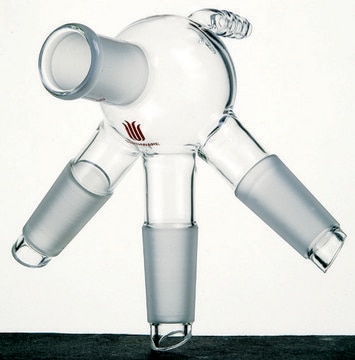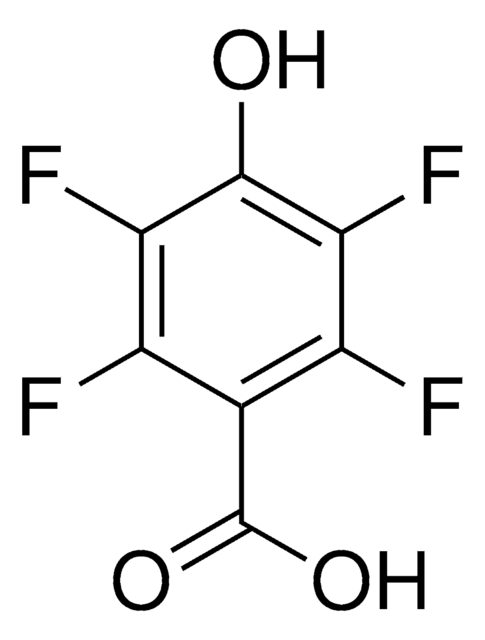推荐产品
重組細胞
expressed in human cells
籤條
3X FLAG tagged
形狀
buffered aqueous solution
分子量
size 4610 bp
菌種選擇
ampicillin
複製起點
pUC
肽切割
EKT
肽標籤位置
N-terminal
啟動子
Promoter name: CMV
Promoter activity: constitutive
Promoter type: mammalian
運輸包裝
ambient
儲存溫度
−20°C
一般說明
The pSF-CMV-NH2-PPT-3XFLAG expression vector is a 4.6 kb derivative of pSF-CMV-Amp for transient expression of secreted N-terminal 3XFLAG fusion proteins in mammalian cells. This vector encodes three FLAG epitopes in tandem (DYKDHDG-DYKDHDI-DYKDDDDK), which results in increased sensitivity when using the anti-FLAG M2 antibody (catalogue number F3165). The third epitope includes the enterokinase recognition sequence, allowing cleavage of the 3XFLAG peptide from the purified fusion protein. The preprotrypsin (PPT) leader sequence precedes the 3XFLAG sequence and directs secretion of the fusion protein into the culture medium. pSF-CMV-NH2-PPT-3XFLAG is a shuttle vector, containing both E. coli and SV40 origins of replication, for propagation in bacterial and mammalian cells. Efficiency of replication and genomic integration is optimal when using an SV40 T antigen expressing mammalian host. The promoter regulatory region of the human cytomegalovirus drives transcription of FLAG fusion constructs.
應用
Cloning in a gene: This plasmid contains a gene within the main multiple cloning site (NotI-ClaI). Any plasmid that we sell where the gene is this configuration will be located in the exact same position in relation to the start and stop codon of the gene. The only exceptions to this rule are fusions proteins where the fusion gene may be positioned at the front or end of the MCS to allow gene fusion.By positioning all of our genes in the same location it allows them to be transferred between plasmids using the same cloning method and restriction sites regardless of the plasmid being used from our product range. Inserting a new gene into this plasmid should be easily possible using a range of standard restriction enzyme sites that flank the gene currently in the vector.Multiple cloning site notes:In the multiple cloning site there are two important restriction sites called BsgI and BseRI sites. These sites both cut the DNA at the same position and cleave the stop codon of the gene in the multiple cloning site in this plasmid thereby producing a TA overhang. This overhang is compatible with any of our peptide or reporter fusion tag plasmids also cut with either of these enzymes. This allows seamless C-terminal fusions to be made with the gene in this multiple cloning site using a single cloning step from our C-terminal peptide and reporter tag product range. Normally the easiest method is to clone the C-terminal tag from our other plasmid products into this plasmid using BsgI or BseRI and the downstream ClaI restriction site.BseRI and BsgI sites are non-palindromic and cleave a defined number of bases away from their binding sites. This allows them to cut the upstream stop codon in the gene in this plasmid regardless of the gene sequence.
序列
To view sequence information for this product, please visit the product page
分析報告
To view the Certificate of Analysis for this product, please visit www.oxgene.com
其他說明
Looking for more vector options to move your experiments forward faster? Consider a custom cloning vector designed and built by Oxford Genetics™. Find out more at Oxford Genetics - Sigma′s partner for cloning and expression vectors for molecular biology and synthetic biology applications.
法律資訊
Oxford Genetics is a trademark of Oxford Genetics Ltd
Oxford Genetics is a trademark of Oxford Genetics Ltd
相關產品
产品编号
说明
价格
儲存類別代碼
12 - Non Combustible Liquids
閃點(°F)
Not applicable
閃點(°C)
Not applicable
我们的科学家团队拥有各种研究领域经验,包括生命科学、材料科学、化学合成、色谱、分析及许多其他领域.
联系技术服务部门


![[1,1′-双(二-叔丁基膦基)二茂铁]二氯合钯(II) 98%](/deepweb/assets/sigmaaldrich/product/structures/192/459/02d1239c-1119-49d9-b392-a04d8f53855c/640/02d1239c-1119-49d9-b392-a04d8f53855c.png)